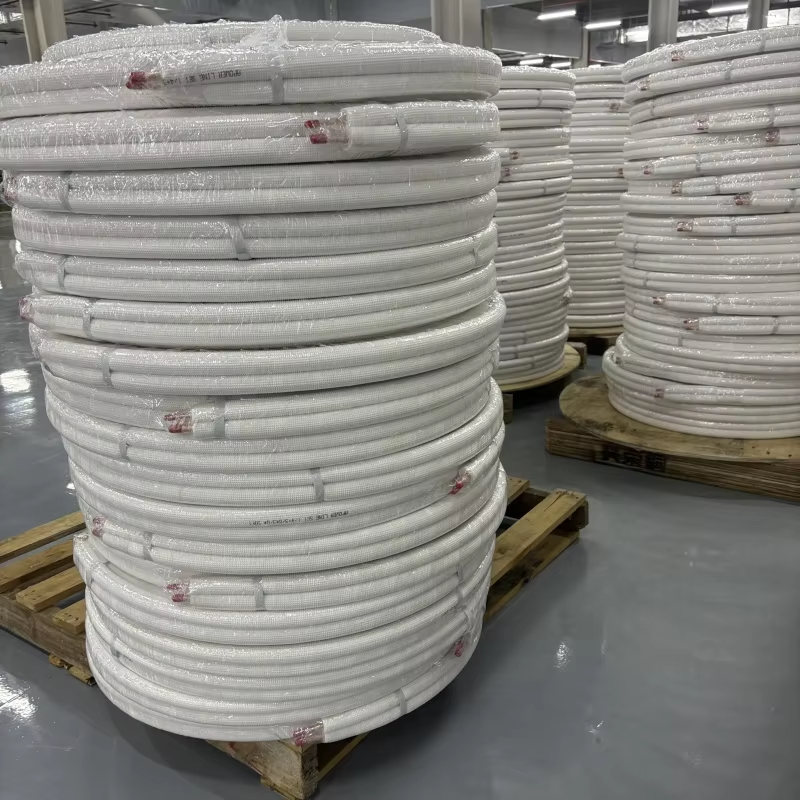Understanding Modern HVAC Line Set Materials and Their Performance
The reliability and efficiency of any HVAC system heavily depends on the quality of its line sets. HVAC line sets serve as the vital pathways that transport refrigerant between the indoor and outdoor units of an air conditioning or heat pump system. Selecting the right material for these essential components can significantly impact system performance, longevity, and maintenance requirements. Let's explore the various materials available and their distinct characteristics to help you make an informed decision for your HVAC installation.
Copper Line Sets: The Industry Standard
Benefits of Copper in HVAC Applications
Copper has long been the go-to material for HVAC line sets, and for good reasons. This versatile metal offers exceptional thermal conductivity, making it highly efficient for heat transfer in both heating and cooling applications. Copper HVAC line sets are known for their durability, with many installations lasting 20-30 years or more when properly maintained. The material's natural antimicrobial properties also help prevent the growth of harmful bacteria and other microorganisms within the system.
Another significant advantage of copper is its malleability. This characteristic makes it easier for technicians to bend and shape the lines during installation, allowing for neat and efficient routing through buildings. Copper's reliability in maintaining consistent pressure levels and its resistance to corrosion further cement its position as the preferred choice for HVAC line sets.
Types of Copper Line Sets
When selecting copper HVAC line sets, contractors typically choose between two main types: rigid and soft copper tubing. Rigid copper offers superior strength and is ideal for straight runs, while soft copper provides greater flexibility for installations requiring multiple bends. Both types are available in different wall thicknesses, commonly referred to as Type L and Type K, with Type L being the standard for residential applications and Type K reserved for heavy-duty commercial use.
The sizing of copper line sets is crucial for optimal system performance. Common diameter combinations include 3/8-inch liquid line with 7/8-inch suction line for larger systems, and 1/4-inch liquid line with 5/8-inch suction line for smaller units. The specific size requirements depend on factors such as the system's cooling capacity and the distance between indoor and outdoor units.
Alternative Materials for Modern HVAC Systems
Aluminum Line Sets
In recent years, aluminum has emerged as a viable alternative for HVAC line sets. While not as widely used as copper, aluminum offers several distinct advantages. It's significantly lighter than copper, making it easier to handle during installation. The material is also more cost-effective, which can lead to considerable savings on large projects. However, aluminum HVAC line sets require special consideration for connections and fittings, as they can be more prone to galvanic corrosion when in contact with dissimilar metals.
Modern aluminum alloys have been developed specifically for HVAC applications, featuring enhanced corrosion resistance and improved mechanical properties. These innovations have helped address some of the traditional concerns about using aluminum in refrigeration systems, making it an increasingly popular choice for certain applications.
Composite and Multi-Layer Options
The HVAC industry has seen the introduction of composite and multi-layer line sets that combine different materials to achieve optimal performance. These innovative solutions often feature a core layer of aluminum or copper surrounded by protective polymer layers. The outer layers provide additional insulation and protection against environmental factors, while the inner layer maintains efficient heat transfer properties.
Multi-layer HVAC line sets can offer enhanced flexibility and easier installation compared to traditional metal options. They also typically come pre-insulated, which can save time during installation and ensure consistent insulation quality throughout the system.

Installation and Maintenance Considerations
Professional Installation Requirements
Regardless of the material chosen, proper installation is crucial for the longevity and performance of HVAC line sets. Professional installers must follow specific guidelines for brazing or connecting different materials, ensuring proper support and spacing of lines, and maintaining appropriate slope for condensate drainage. The installation process also includes pressure testing to verify the integrity of connections and confirm the absence of leaks.
Different materials may require specific tools and techniques for installation. For example, copper line sets typically require brazing with appropriate filler metals, while some newer materials might use mechanical fittings or special connection systems. Proper training and certification are essential for installers working with various line set materials.
Long-term Maintenance and Protection
The durability of HVAC line sets largely depends on proper maintenance and protection from environmental factors. This includes regular inspections for signs of damage or deterioration, maintaining proper insulation, and protecting exposed portions from physical damage and UV radiation. Line sets should also be properly supported to prevent sagging or stress on connections over time.
Environmental considerations play a crucial role in material selection and maintenance requirements. Coastal areas may require additional corrosion protection, while regions with extreme temperature variations might benefit from materials with better thermal stability properties.
Frequently Asked Questions
How long do HVAC line sets typically last?
The lifespan of HVAC line sets varies depending on the material and installation quality. Copper line sets can last 20-30 years or more when properly installed and maintained. Aluminum and composite materials may have different life expectancies, but most quality installations should provide at least 15-20 years of reliable service.
Can different materials be mixed in HVAC line set installations?
While it's technically possible to connect different materials, it's generally not recommended due to potential issues with thermal expansion rates and galvanic corrosion. When repairs or replacements are needed, it's best to use the same material as the existing installation or replace the entire line set.
What factors should be considered when choosing line set materials?
Key considerations include the system size and capacity, installation environment, budget constraints, local climate conditions, and installation complexity. Other factors include local building codes, contractor expertise with specific materials, and long-term maintenance requirements. The decision should balance initial costs with long-term durability and performance expectations.




